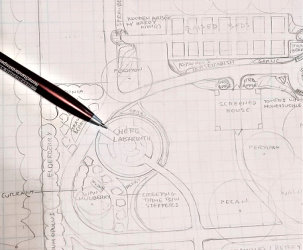“Gardening helps us de-stress and unleash our creativity”
So many of today’s gardens are filled with plants imported from other parts of the world. There are companies that even specialize in going overseas to find new plants to introduce into our North American landscape. However, as our gardeners become more ecologically conscious, the native plants seem to be making quite the comeback. One could say, we are starting to see more potential in the “natural beauty”.
Native plants can withstand Nebraska’s climate extremes and provide vital habitats for our wildlife, such as birds, bees, butterflies and lots more of our favorite creatures. The deep root systems of many native Midwestern plants increase the soils ability to store water in result, reducing water runoff and potentially even flooding. This is also beneficial in terms of lowering our water usage. 1.7 trillion gallons of water is used per year just to water GRASS. That’s not even including your patio planters and freshly installed landscape.
There are many reasons why planting a mostly native garden is so important.
First, native plants can withstand the extremes of Nebraska seasons providing reliable homes for the wildlife population. While all plants can provide shelter and food, native verities offer greater benefits because they also support a wide variety of insects that provide a source of protein for many other animals. Birds especially. By growing native plants, you will support other native species as well.
Second, native plants will require much less care than any hybrid or ornamentals. Since they are indigenous, they have developed defenses allowing them to coexist with other species in that environment and not only can they do without soil amendments and irrigation, they can help the species they are coexisting with. Gardens that contain those imported plants will often require special care including pesticides and fertilizers, negatively effecting our environment.
Fourth, native plants in gardens act as a source of seeds and keep local natural areas populated with native plants. Seeds are spread by wind, water and wildlife from plants in residential landscapes into local parks, trails, and conservation areas..
The ecologically conscious landscaper and gardener will take all these aspects into consideration. Whether it be tall shade trees, shrubs or perennials, native plants are important to use in gardens and around the house. It is to the benefit of local ecosystems, and the plants and animals in them, to use native plants in all areas of the landscape.
Echinacea (Coneflower)
Rudebeckia (black eyed susan)
Solidago (Goldenrod)
Liatris (Gayfeather)
Heliopsis
Viburnum
Elderberry
Serviceberry
Silver maple
Ohio Buckeye
Western Sandcherry
Dogwood
These are just a few of the native plants you will likely see amidst a Sunday afternoon drive but the list surely goes on. As many of the native plants can become quite evasive, its important to do some research before choosing what plant to put where. So, be sure to stop at your local garden shop and/or visit the NE Statewide Arboretum website.
Anything and everything you could imagine in regards to gardening/plants








